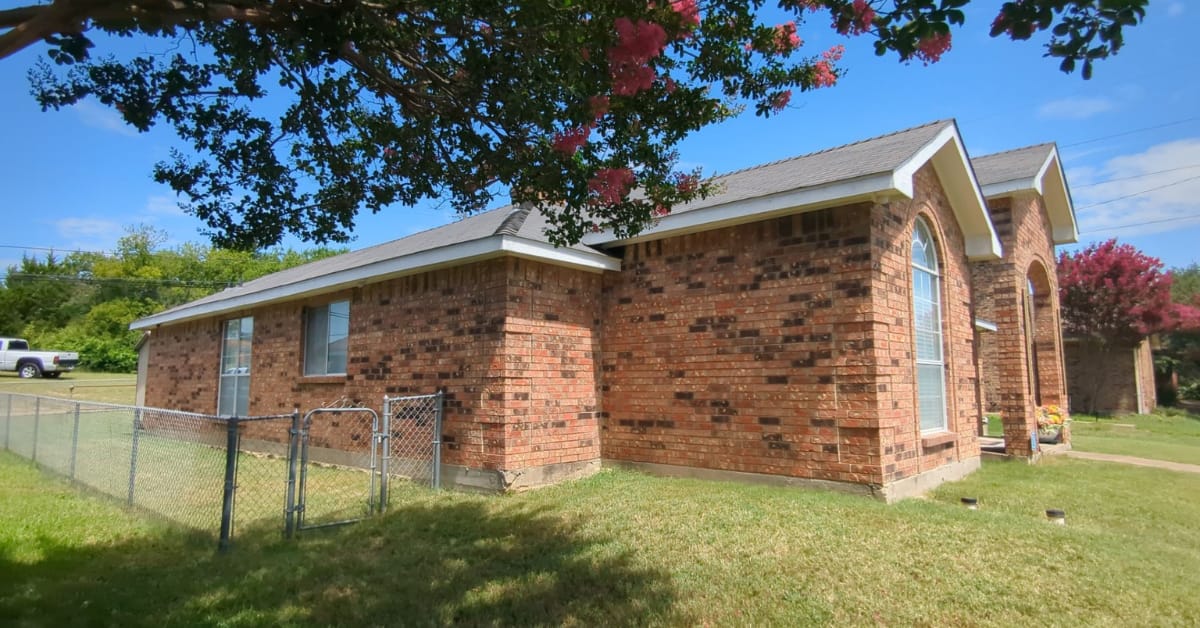-
Landscaping mistakes may seem like merely cosmetic problems, but they can damage your home just as much as poor roofing or siding.
-
These issues often come from crews who don’t understand drainage or local codes, and typically concern grading, patios, and fences.
-
Before hiring anyone to work on fences, raised beds, planter walls, or other landscaping projects, make sure they have an understanding of the addition’s impact on drainage.
Not too long ago, our team worked with a homeowner who once had a peaceful backyard view overlooking a stretch of greenery. Then a massive short-term rental went up next door. It was an eyesore, sure. But the revolving door of tenants also threw loud parties every weekend. The homeowner owner wanted to build a 10-foot landscape screen to block the view and noise.
It’s a great plan, but it’s also one that could introduce a new problem: If your crew doesn’t think through drainage, grading, or permit needs, you might trade one problem for another. We’ve seen this a lot in Texas. Landscaping seems like a separate category from roofing or siding, but it can have a direct effect on your home. That’s what we’ll explore in this article: some of the most common landscape-related problems that could be avoided by an experienced crew.
If It Affects Drainage, It Affects Your Home
Water follows a grade, so if your property doesn’t slope away from your foundation, water can pool along the edges. Over time, that can cause all kinds of problems from slab movement and floor cracking to mold and wall separation. In other words, a driveway or patio that sends water back toward your home, or a fence that traps runoff, can lead to structural damage without preventative measures in place.
The Texas Department of Housing (TDHCA) recommends a slope of at least 6 inches over the first 10 feet away from the home. Downspouts should extend at least 5 feet, and if the yard still holds water, a drain may be needed. As the TDHCA put it in their Minimum Construction Standards publication:
“Surface drainage shall be diverted to a storm sewer or other approved point of collection that does not create a hazard. Lots need to be graded to drain surface water away from the foundation at a minimum slope of 6” within the first 10’. Where lot lines or other physical barriers prohibit this, drains, swales, and/or rain gardens shall be constructed to ensure drainage away from the structure. Use of alternative drainage methods must be approved by TDHCA.”
This extends to pouring a concrete patio too. The contractor needs to achieve the right slope or runoff plan so water doesn’t run straight toward the home. Other structures, like fences, also need to be carefully considered to ensure they don’t block natural runoff paths.
In other words, just because a landscaping job may seem less consequential than a roof repair, it’s still important to make sure it’s done by the book, with special attention to how the addition will protect your home from wear over the long term, since poorly designed or implemented work could end up causing real damage.
This goes for landscape screens, berms, planter walls, or even large raised beds too, all of which can redirect water, push it toward the home, or cause pooling without a drainage plan.
In the case of our client with the distracting rental next door, we’re working with them to design a screen that protects their privacy from their new neighbor(s), dampens the sound, and doesn’t interfere with the home’s drainage setup. That takes extra time and care, but it also prevents even more expensive repairs later.
We’re Here to Help
Need more information? If you have any questions or need assistance with damage, contact DFW Roofers at (469) 751-4018 or schedule an appointment through our online appointment form.


